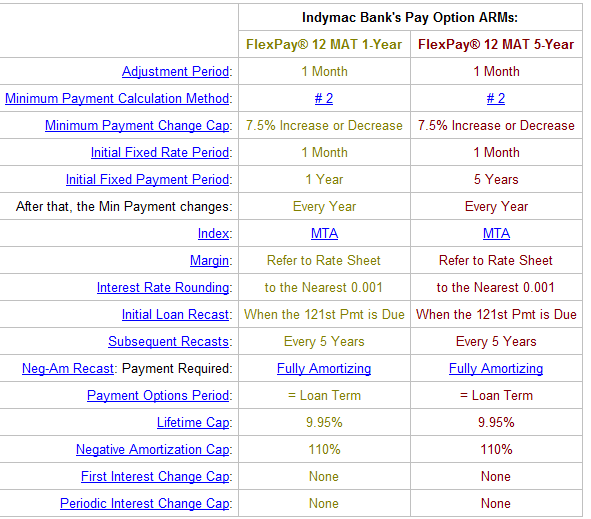Pay Option Mortgages and the LIBOR Index Rates
Post on: 5 Июль, 2015 No Comment

There is another new wrinkle in home mortgages getting a lot of press. The option style mortgage (with marketing names such as Power Option or Cash-Flow mortgage) has been around fairly quietly since at least 2002 but has been gathering interest as house prices have increased and buyers and mortgage providers alike strive to keep payments affordable. It is, as most new mortgage products are, a modification of older products that have been around forever. Option mortgages appear to be a modification of, well of almost everything, including the 30 and 15-year fixed rate mortgage, ARMs, and interest only loan payments and with a sprinkle of negative amortization.
The option mortgage is well named. Borrowers have four separate alternatives that they can invoke, not when they take out the mortgage, but every single month. There are probably a number of variations on the option mortgage theme, but here are some of the common denominators we found.
The option product is an adjustable rate mortgage; a caffeine stoked ARM. One of the biggest selling points is an incredibly low initial interest rate, some as low as 1 percent. Notice the words initial rate. Teaser rate is probably more appropriate and borrowers should enjoy it while they can. The option arm mortgage adjusts frequently, every few months or even every month, based on an index such as the London Interbank Offered Rate (LIBOR) plus a margin set by the lender. Therefore, as with a traditional mortgage, if the LIBOR index or other index goes up, the mortgage rate rises with it, only much more frequently. Nothing we have read indicates whether these loans have a rate cap that controls the speed of rate increases or the lifetime maximum interest, but given the low initial rates that first step is bound to be a doozie. Many do seem to have a period during which the initial teaser rate is fixed. One lender advertises for up to 60 months. But up to are among the world’s best weasel words.
The option part of this loan however comes in the many alternative payments that the borrower can make. Most of the option loans allow the borrower to make a decision, each and every month, as to the payment they will make.
A payment based on a 30 year amortization table which, if made every month, will pay off the mortgage, in 30 years of course.
A payment based on a 15 year amortization table.
An interest only payment. The principal balance will remain unchanged after the payment is applied for that month. The programs we looked at did not seem to put a limit, at least in their marketing materials, on the number of months this option could be utilized.
A partial interest payment in which part of the interest is deferred and added to the principal balance (where one would assume it also accrues interest.)
One company illustrates these four mortgage payments with the following examples based on a $400,000 mortgage, a LIBOR of 1.318 percent (today the 3 month current LIBOR rate is 3.5045), and a margin of 2.55 percent. The initial start rate for the minimum payment (the teaser rate) is 1.95 percent.
The minimum amount due would be $1,468.50
The interest only amounts would be $1,679.59
The 30-year amortization payment would be $1,879.35
The 15-year amortization payment would be $2,932.36
Promoters of these products make a number of points about their advantages. For example:
- The borrower can tailor loan payments to achieve short and long term financial goals.

The above will pass without editorial comment, but here are some questions you should ask if you are contemplating such a loan product.
- How long is the initial rate fixed and how often after that will the interest rate adjust?
The availability of option loans and the increasingly popular interest only loans have triggered some anxiety among banking regulators. Realty Times has published a report that federal regulators were taking a look at both of these mortgage types and that they could be reined in. The report, based on an interview with Barbara Grunkemeyer, Deputy Comptroller of the Currency, said that the current examination is likely to result in new guidance for banks and other regulated lenders vis-‘-vis their underwriting and credit standards for these loans but that this would not necessarily restrict their availability.
Federal regulators have little control anyway over mortgage companies which are largely state licensed and regulated.
For the reasons used by lenders to promote their products as stated above, these are intriguing loans. But, as can be clearly seen there are a lot of hazards — interest rates that could take off and drag payments along behind them with a higher rate of acceleration than regular adjustable rate mortgage loans; the possibility that the principal balance will be higher in years two, three, or four than at inception. The latter coupled with any decline in housing values could leave a borrower in a fine mess indeed should he need to sell the home.














